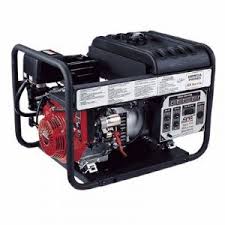WHAT IS A GENERATOR?
WHAT IS A GENERATOR?
Before discussing home gensets selection, let's go over some basics. Generator is a latin word that means originator or maker. In power industry, this term refers to a device that produces electricity. We know that although electricity does occur naturally, it does not exist in the forms that currently can be practically utilized. For practical use it is produced from other sources of energy. Technically speaking, in electric generators electricity is produced from mechanical energy. The mechanical energy in turn can be generated from chemical, nuclear or thermal energy contained in various types of fuel. It can also be obtained from renewable resources. A machine that transforms energy in fuel into rotational energy to drive generator's rotor is called prime mover. Steam turbines, internal-combustion engines, gas combustion turbines, water and wind turbines are the common types of prime movers.
HOW IT WORKS?
The operation of electric generators is based on the phenomenon of electromagneticinduction: whenever a conductor moves relative to a magnetic field, voltage is induced in this conductor. Particularly, if a magnet is spinning inside a coil, a periodic AC voltage is induced between its terminals. For more information see our tutorial on how generators work with an animation that illustrates their basic operation.When an external circuit connected to the coil terminals the induced voltage (called electromotive force or emf) will create an electric current resulting in energy being delivered to the load. Thus, the kinetic energy that spins the source of the magnetic field is converted into electricity. Note that the current flowing through an external load in turn creates a magnetic field that opposes the change in the flux of the coil, so the coil opposes the motion. The higher the current, the larger the force that must be applied to the magnet to keep it from slowing down.
In practice, the magnetic field is most often induced by an electromagnet rather then a permanent magnet. It consists of so-called field coils mounted on an iron core. A flow of electric current in the field coils is required to produce magnetic field. This current may be obtained either from an external source or from the system's own armature. The initial field is produced by residual magnetism in the electromagnet's cores. When the prime mover starts spinning, the armature at first operates in a very weak magnetic field and therefore produces small emf. This emf creates a current in field coils, which increases magnetic flux, which in turn increases emf in the armature. This process continues until the rated output voltage is reached.










No comments
Tell your suggestion or comment,it will help us...